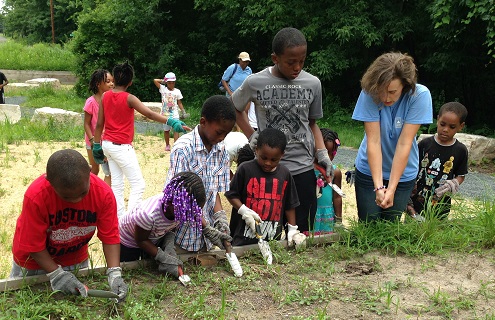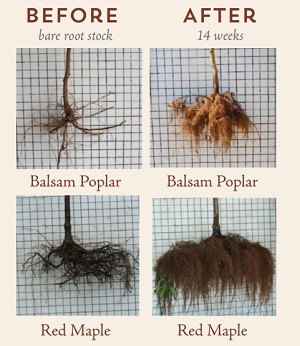Mighty Oaks from Little Acorns Grow. — Proverb
What Is Propagation?

Propagation is the process of reproducing plants from seeds, divided roots, cuttings, or other plant parts. In the summer of 2014, the City installed a propagation garden in the Classroom including raised garden beds, stone seating, and space for gravel beds. The propagation garden provides a source for local ecotype plant material for future restoration activities within the Classroom and a site for educational activities for students and volunteers. Each year, the propagation garden features a variety of native species. Some of the native species that you might see in the propagation garden include prairie blazing star, purple prairie clover, prairie dropseed, and butterfly milkweed.
Growing in Gravel

A relatively new strategy for propagating woody plant material is the use of gravel beds. A gravel bed is an irrigated raised garden bed filled with about 18” of pea stone or another coarse stone instead of soil. Dormant bare root nursery stock is planted in the gravel and grown until it is time to be transplanted. The porous structure of the pea stone retains water and allows oxygen to penetrate deep into the lower portions of the bed, allowing fibrous roots to develop. Fine, fibrous roots are typically broken or damaged when a plant is removed from soil, but conversely, gravel falls away from the roots and causes very little damage. This fibrous system grows vigorously while the plant is in the gravel, enabling it to easily absorb vital nutrients when planted. The result is increased transplant success.
Photos
- Youth in a Propagation Garden. Photo: City of St. Paul
- Roots before and after. Image: University of Minnesota Forest Resources
